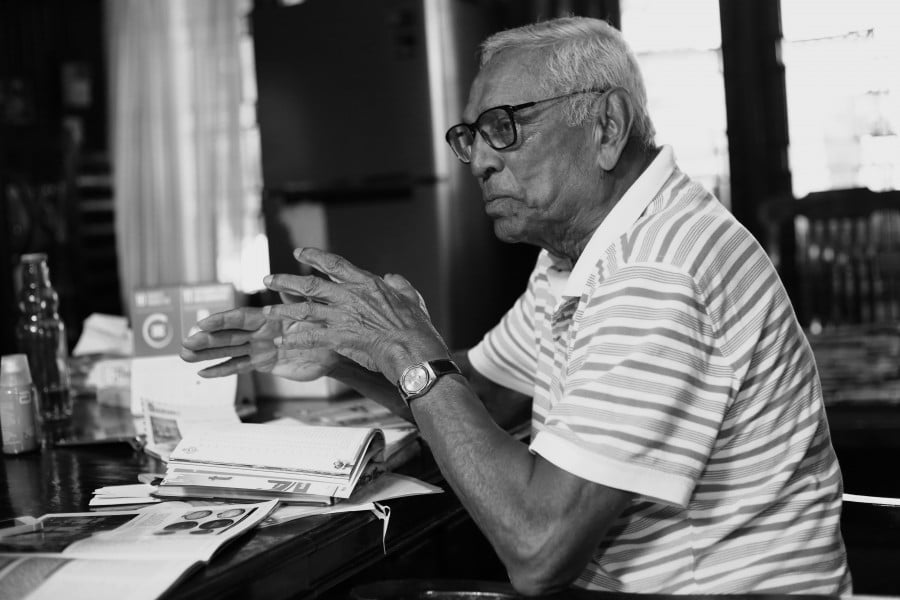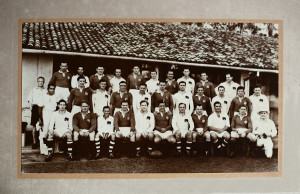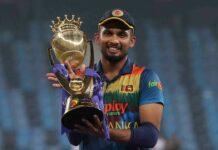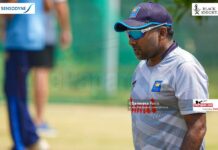Dubbed ‘Asia’s Fastest Man’ at one point in time, Summa Navarathnam was a household name in the Sri Lanka (then known as Ceylon) Rugby and Athletics circles in the 40’s and 50’s.
Born in 1925 to a family of eight in the rural village of Araly North in Vadukodai in the Jaffna Peninsula, Summa Navarathnam was renowned for his blistering speed on the rugby field and the grass turf back in his prime.
Wanting to groom his son in the traditions of the British Public Schools, Navarathnam’s father admitted him to Royal College for his primary and secondary education.
A true all-rounder when it came to sports, his first significant sporting achievement came in the Boxing ring when he finished as the runner up in the 1939 Stubbs Shield boxing meet.
At the tender age of 15 he was awarded colours for Athletics in 1940 and remains to date the youngest athlete to achieve this feat at Royal College.
Summa dominated the Athletics field and in the 1943 Public Schools’ meet, secured the 200m and 400m races with exceptional timings. He was faced then with a dilemma; to run his preferred event the 100m or to run the relays. Summa decided to put aside personal glory and put his College first, competing in the relay to hand Royal College both the Tarbat and Jefferson trophies. This self-less act brought great accolades from teammates as it emphasises the fact that the name on the front of the jersey matters more that the name at the back. Summa proved himself to be an exceptional talent and was handed the captain’s arm band in Athletics for the years 1942 and 1943.
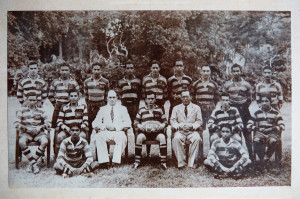
In 1947, Summa stamped his mark as the fastest man in Ceylon by winning the 100 yard sprint at the nationals. Summa won the Wilton Bartleet Trophy in the 1944, 1946 and 1947 for the best individual performance at the nationals. Having produced all of these magnificent performances, Summa was the front runner to represent Ceylon at the 1948 London Olympics but favouritism, as he said “My Coach, he was a doctor he said I was medically unfit and selected his son. He said I was supposed to have Hernia which still I don’t have”, meant he missed out on selection.
Summa has the unique distinction of having represented Sri Lanka in two different sports on the very same day. In 1953, he participated in the Ceylon AAA Nationals 100m event, in which the Asian record holder, Lavy Pinto of India also took part. Having won his heat comfortably, Summa then travelled to CH & FC to represent the Ceylon national team in their Rugby match against the Australian Colts.
In 1953 Summa participated in the very prestigious Indian States Olympic meet in Madras and it was there in the 100m event that he shattered the 100m Asian record, setting his own at 10.4 to earn the famous title as “Asia’s Fastest Human”.
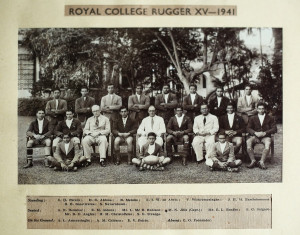
We made sure to ask Summa if he had run on the synthetic track, would he have run faster. He answered “You would never know. Because running on grass, it is uneven and does not help but synthetic does. But you would never know as I have not run on a synthetic track”
Rugby career
Summa’s Rugby career was as good as his Athletic career. Taking to the sport at the age at 14, Summa’s speed was 1st noticed at inter-house matches. Summa took us back to the year 1941 when Royal managed to beat Trinity in Colombo for the first time. Captained by Minoo Jilla, the lads from Reid Avenue, playing at home, overcame the mighty Trinitians; Trinity were always referred to as the “Cradle of Rugby in Sri Lanka” in those days. Prior to the Trinity game, Royal came up trumps against St. Peter’s, winning by a slender margin of 5-0. In the year 1943, to add to his glittering school rugby career Summa played a pivotal when Royal College defeated Trinity in the first double header game ever played. Summa was the captain in the second leg as Royal won 5-3. The highlight of the game was him scoring the winning try as he made a 60 yard sprint to score a ‘Dream’ try under the post.
Even though many teammates made the switch to Havelocks SC, Summa recalls how he happened to join CR & FC. While making his way to Havelocks Summa was stopped by a certain Sydney Soysa and was convinced to join CR & FC. Summa was the captain of the CR team in 1954 and 1955 as they went on to win the Clifford Cup in both seasons. In 1955 Summa was selected to represent Sri Lanka in the All Indian tournament as he impressed with the Captain’s arm band and guided CR unbeaten that year.
The climax of Summa’s professional rugby career was when he was called up to represent the Ceylon team against the touring British and Irish Lions. Following the game, the manager of the visiting Lions stated that Summa was the only player that could have featured in the British and Irish Lions team, no doubt a fact that Summa is extremely proud of.
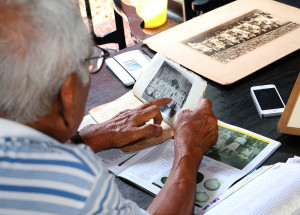
Summa’s proudest achievements came while coaching his alma mater from 1976 – 1983, where Royal won the coveted Bradby Shield 5 times.
While coaching Royal, he also took over at Police. During that year Police had an extremely good season, going unbeaten in the B division and they went on to beat CR & FC but failed in the final hurdle, falling short to Havelocks SC 3-nil.
Currently, 91 year old Summa takes great pride in coaching the grass-roots level of Royal College (U8). Talking about the present state of Rugby, Summa mentions that “SLRFU are going in the right direction, but unfortunately in the physical aspect of the sport, we are behind the rest of the world”
Finally he ended with a message to the current generations of coaches saying “Because the crowd comes behind results, coaches tend to leave the few students who are under developed behind, but my one advice would be to take every student forward. Some children are late developers so you need to take everyone forward and develop them as well. They tend to discard those who are bad and take the good few forward to show results which is unfair on the under developed few. Coaches should develop every single student and never leave any student behind.”


